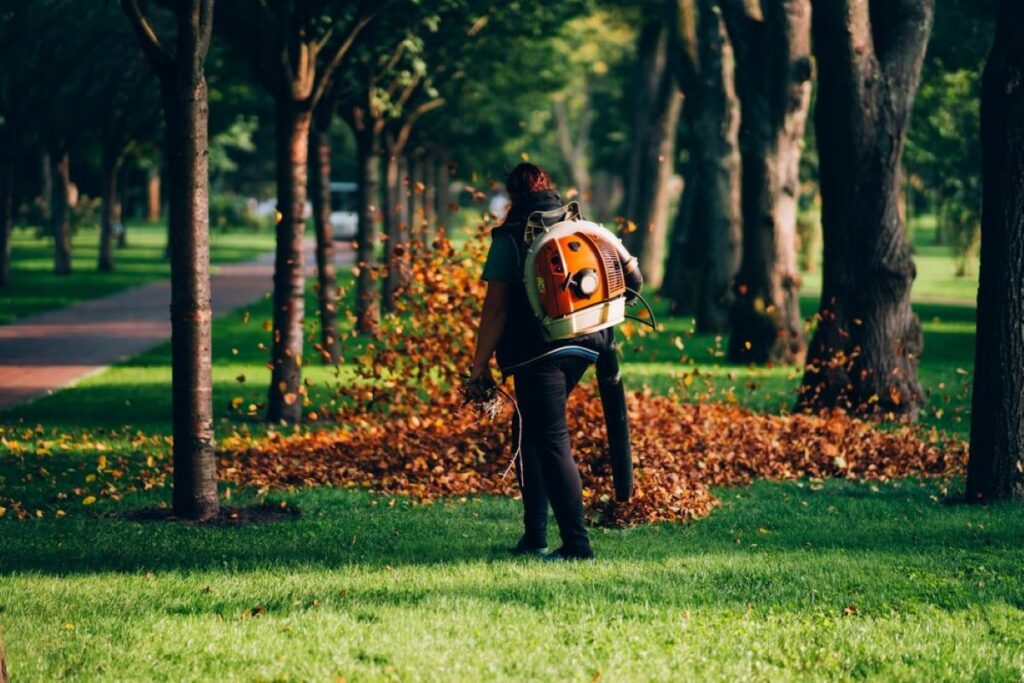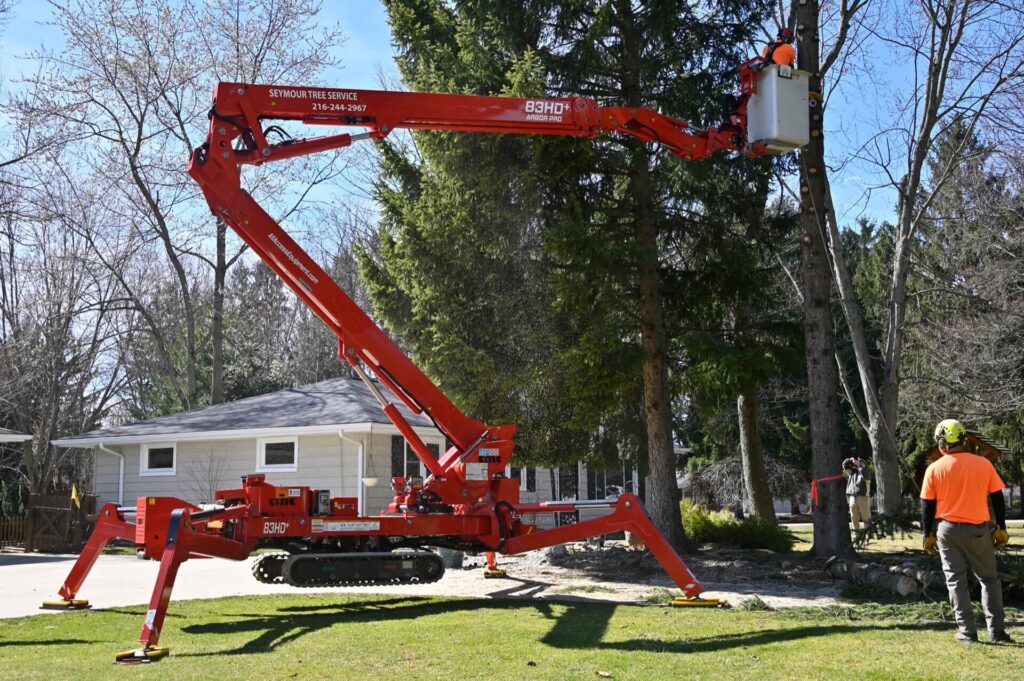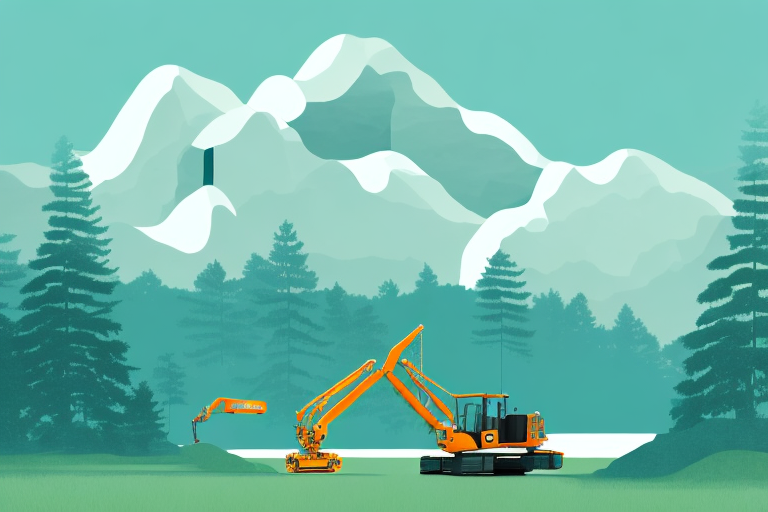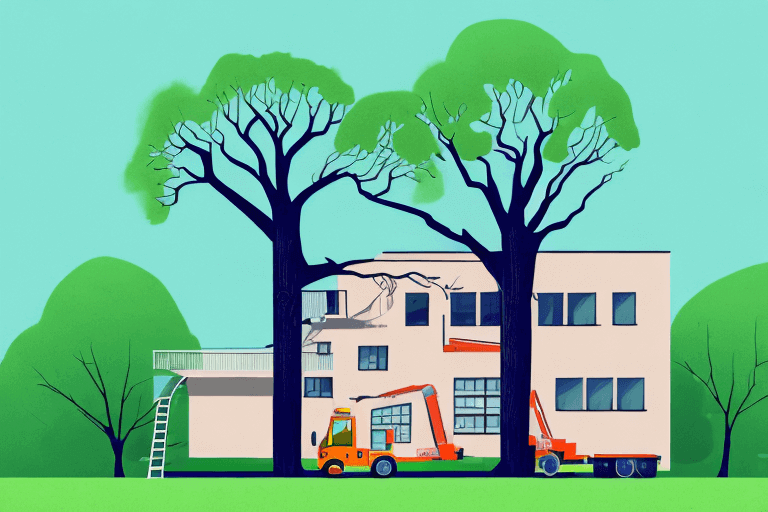Why Is Proper Tree Cutting Important for Homeowners?
Trees enhance property aesthetics and provide essential environmental benefits, yet their maintenance requires careful consideration and proper techniques. Sydney homeowners face unique challenges when managing trees on their properties, making proper tree cutting practices crucial for several reasons:
Safety First
- Reduces risks of falling branches
- Prevents damage to property
- Protects family members and neighbours
- Minimises interference with power lines
Tree Health Management
- Promotes healthy growth patterns
- Prevents disease spread
- Maintains structural integrity
- Extends tree lifespan
Legal Compliance
- Adheres to Sydney’s local council regulations
- Avoids potential fines
- Maintains neighbourhood harmony
- Preserves protected species
Proper tree cutting techniques directly impact property value and safety. Sydney homeowners who understand and implement correct cutting practices create safer environments while preserving their trees’ health and beauty. These practices also ensure compliance with local regulations, preventing potential legal issues and maintaining positive relationships within the community.
How Can Homeowners Assess Tree Health and Identify Risks?
Regular tree assessment helps prevent potential hazards and maintains property safety. A systematic approach to tree health evaluation enables homeowners to spot issues before they become critical.
Key Signs of Tree Health Problems:
- Dead or dying branches with no leaves
- Cracks or splits in the trunk
- Leaning trunk or exposed roots
- Fungal growth on bark or roots
- Peeling or loose bark
- Discoloured or misshapen leaves
- Presence of pests or disease symptoms
Structural Risk Indicators:
- Trees growing too close to power lines
- Branches hanging over structures
- Root damage from construction
- Multiple trunks with weak attachment points
- Hollow sections in the trunk
Environmental Risk Factors:
- Soil erosion around tree base
- Recent construction activity near roots
- Changes in drainage patterns
- Storm damage
- Proximity to buildings or walkways
A thorough tree assessment includes examining both visible and hidden dangers. Homeowners should check their trees after severe weather events and seasonal changes. Documentation of tree conditions through photographs helps track changes and deterioration patterns.
Professional arborists recommend conducting detailed inspections at least twice yearly, focusing on both the tree’s crown and root system. These assessments prove particularly crucial for trees located near structures or high-traffic areas. If you notice any of the aforementioned signs, it might be time to call an arborist for a tree risk assessment.
Moreover, implementing cost-effective tree care steps can significantly enhance the health and longevity of your trees while minimizing risks.
What Steps Should Homeowners Follow to Plan a Safe Tree Cutting Process?
A well-planned tree cutting process protects property, people, and surrounding vegetation. Proper preparation minimises risks and ensures compliance with local regulations.
Essential Planning Steps:
- Site Assessment
- Measure the tree’s height and spread
- Identify potential obstacles (power lines, buildings, fences)
- Mark safe escape routes
- Calculate the tree’s falling direction
- Documentation Requirements
- Photograph the tree from multiple angles
- Document existing property conditions
- Gather necessary council permits
- Check insurance coverage
- Equipment Checklist
- Safety gear (helmets, goggles, gloves)
- Cutting tools and equipment
- First aid kit
- Communication devices
- Notification Protocol
- Inform neighbours of planned work
- Contact utility companies if near power lines
- Schedule work during appropriate weather conditions
- Arrange waste removal services
- Emergency Preparation
- Create an emergency response plan
- Keep emergency contacts readily available
- Identify nearest medical facilities
- Review evacuation procedures
Pre-Cutting Safety Measures:
- Clear the work area of obstacles
- Set up warning signs and barriers
- Position equipment strategically
- Brief all participants on safety protocols
A methodical approach to tree cutting planning helps prevent accidents and ensures compliance with local regulations. The investment in proper planning pays dividends in safety and efficiency during the actual cutting process.
What Are Sydney’s Tree Prevention Laws and How Do They Impact Homeowners?
Sydney’s tree preservation laws protect the urban forest and regulate tree management activities. These regulations apply to both private and public properties, requiring homeowners to obtain specific permits before undertaking any tree work.
Key Legal Requirements for Sydney Homeowners:
- Trees with a height of 5 metres or greater require council approval for removal
- Protected species and heritage-listed trees need special permits
- Penalties for unauthorised tree removal range from $3,000 to $110,000
- Emergency tree work must be documented with photographic evidence
Permit Application Process:
- Submit a detailed application form to the local council
- Include photographs of the tree(s) in question
- Provide arborist reports when requested
- Pay the applicable assessment fees
- Wait for council assessment (typically 2-4 weeks)
Exemptions from Permit Requirements:
- Dead trees (proof required)
- Trees within 3 metres of an approved building
- Species listed as noxious weeds
- Trees causing immediate danger (documentation needed)
Different Sydney councils maintain specific regulations for their areas. The Hills Shire Council might have different requirements compared to the Northern Beaches Council. Homeowners should check their local council’s website or contact their tree management officer for precise guidelines.
Professional tree services in Sydney must verify all necessary permits before starting any work. This requirement protects both the service provider and the homeowner from potential legal consequences.
Image
Drag and drop an image, upload, or choose from your library.UploadMedia LibraryInsert from URL

Why Should Homeowners Consider Hiring Professional Tree Services in Sydney?
Professional tree services bring essential expertise and specialised equipment to handle complex tree-cutting projects safely and efficiently. These experts possess extensive knowledge of different tree species, growth patterns, and potential hazards that might not be apparent to untrained eyes.
Key Benefits of Professional Tree Services:
- Comprehensive risk assessment capabilities
- Access to specialised cutting equipment
- Proper disposal of green waste
- Insurance coverage for property protection
- Time and cost-efficient execution
- Expert advice on tree health management
Reputable tree service companies in Sydney offer a wide range of specialised solutions:
- Precision Tree RemovalStrategic cutting techniques
- Protection of surrounding vegetation
- Minimal impact on property
- Emergency Services24/7 response for storm damage
- Rapid assessment and solution implementation
- Safe removal of hazardous branches
- Preventive CareRegular health inspections
- Disease identification
- Growth management strategies
Professional arborists also maintain updated knowledge of local council regulations and environmental guidelines. Their expertise helps homeowners avoid potential legal issues while ensuring the preservation of healthy trees that enhance property value.
Licensed tree services carry appropriate insurance coverage, protecting homeowners from liability in case of accidents or property damage during the tree cutting process. This professional protection provides peace of mind that DIY approaches cannot match.
When Should Homeowners Choose Complete Tree Removal Over Lopping?
Tree removal and tree lopping serve different purposes in managing residential trees. Understanding these differences helps homeowners make informed decisions about their tree care needs.
Tree Lopping vs Complete Removal: Key Differences
Tree Lopping:
- Reduces tree size through strategic cutting
- Preserves the tree’s core structure
- Maintains the tree’s presence in the landscape
- Suitable for healthy trees requiring maintenance
Complete Tree Removal:
- Eliminates the entire tree, including roots
- Changes the property’s landscape
- Requires significant equipment and expertise
- Creates space for new landscaping opportunities
Decision-Making Factors for Tree Management
Safety Considerations:
- Dead or severely diseased trees require removal
- Trees with compromised structural integrity pose risks
- Trees growing too close to buildings need assessment
- Root systems damaging foundations warrant removal
Property Management:
- Trees blocking essential sunlight
- Specimens causing excessive debris
- Trees interfering with construction plans
- Species unsuitable for the location
Tree Health Assessment:
- Trees with irreversible disease spread
- Specimens with severe storm damage
- Multiple dead or dying branches
- Signs of root rot or decay
Homeowners should consider tree lopping when dealing with healthy trees that simply need size management. Complete removal becomes necessary when trees pose safety risks, show irreversible decline, or conflict with property development plans. Professional arborists can provide detailed assessments to guide these decisions based on specific circumstances.
What Tools and Techniques Do Professionals Use for Efficient Tree Cutting?
Professional arborists utilise specific tools based on branch sizes and cutting requirements:
Small Branch Equipment (up to 5cm diameter)
- Hand pruners
- Loppers
- Pruning saws
- Safety gloves
- Eye protection
Medium to Large Branch Tools (5cm-30cm diameter)
- Chainsaws
- Pole saws
- Rigging equipment
- Climbing gear
- Wood chippers
Heavy-Duty Equipment (30cm+ diameter)
- Professional-grade chainsaws
- Crane systems
- Stump grinders
- Heavy-duty ropes
- Fall protection systems
Professional cutting techniques prioritise precision and safety:
Three-Cut Method
- Undercut one-third through the branch
- Top cut slightly further out
- Final cut near the branch collar
Directional Felling
Professionals analyse:
- Tree lean
- Wind direction
- Surrounding obstacles
- Escape routes
Crown Reduction
- Selective cutting of branches
- Maintaining natural tree shape
- Preserving branch collar
- Avoiding flush cuts
These specialised tools and techniques help professionals maintain tree health while protecting surrounding property. Each cut requires careful consideration of angle, depth, and timing to prevent bark tearing or structural damage.
See Also : How Tree Removal Services in Sydney Can Save Your Home and Garden
How Can Homeowners Maintain Tree Health After Cutting?
Post-cutting tree care is crucial for ensuring the long-term health and survival of trees. Proper maintenance practices help trees recover from the stress of cutting while promoting strong regrowth.
Essential Post-Cutting Care Practices:
- Apply pruning sealer to cuts larger than 5cm in diameter to prevent disease entry
- Water the tree regularly during the first 3-4 weeks after cutting to reduce stress
- Add a 5-10cm layer of organic mulch around the tree base, keeping it away from the trunk
- Monitor the cut areas for signs of decay or pest infestation
- Maintain soil fertility with appropriate fertilisation during the growing season
Signs of Healthy Recovery:
- New leaf growth emerging from remaining branches
- Wound wood formation around cut areas
- Strong bark development
- Absence of fungal growth or insect activity
Regular inspection of the tree’s condition helps identify potential issues early. Professional arborists recommend scheduling follow-up assessments within 6-12 months after significant cutting work to ensure proper healing and growth patterns.
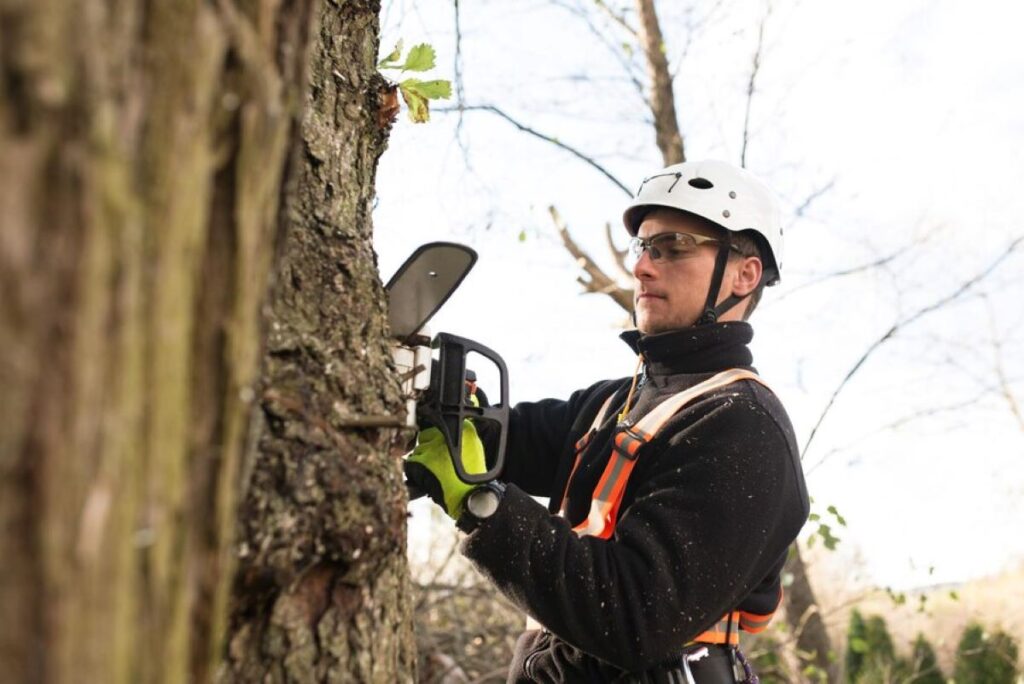
What Safety Precautions Should Be Taken During Tree Cutting Activities?
Tree cutting involves significant risks that require careful attention to safety protocols. Homeowners need to prioritise these essential safety measures:
1. Personal Protective Equipment (PPE)
- Safety goggles for eye protection
- Hard hat to guard against falling debris
- Steel-capped boots to protect feet
- Cut-resistant gloves for secure grip
- Ear protection when using power tools
2. Power Line Safety
- Maintain minimum 3-metre distance from power lines
- Contact utility companies for assistance with trees near cables
- Never attempt cutting trees entangled with electrical wires
3. Equipment Safety
- Inspect tools before use
- Keep chainsaws sharp and well-maintained
- Use appropriate tool sizes for specific branch diameters
4. Site Security
- Clear the work area of obstacles
- Establish a safety zone twice the height of the tree
- Position spotters to warn of potential hazards
- Secure loose items that might cause trips or falls
Proper safety measures protect both the person performing the tree cutting and anyone in the surrounding area. A methodical approach to safety reduces the risk of accidents and ensures a controlled tree cutting process.
Are There Any Additional Tips That Can Help Homeowners With Long-Term Maintenance Of Their Trees?
Long-term tree maintenance requires consistent attention to several key factors beyond regular cutting and pruning:
Soil Management
- Test soil pH levels annually
- Add appropriate nutrients based on tree species
- Maintain proper drainage around root systems
- Apply mulch to retain moisture and protect roots
Disease Prevention
- Inspect trees monthly for signs of pest infestation
- Remove dead or diseased branches promptly
- Keep trees adequately spaced for proper air circulation
- Apply preventive treatments during susceptible seasons
Watering Practices
- Water deeply but infrequently to encourage deep root growth
- Adjust watering schedule based on seasonal changes
- Install drip irrigation systems for consistent moisture
Professional Assessments
- Schedule annual inspections with certified arborists
- Document tree health changes and maintenance activities
- Create a long-term care plan specific to each tree species
These practices help ensure trees remain healthy, strong, and continue to enhance property value while minimising potential risks.

